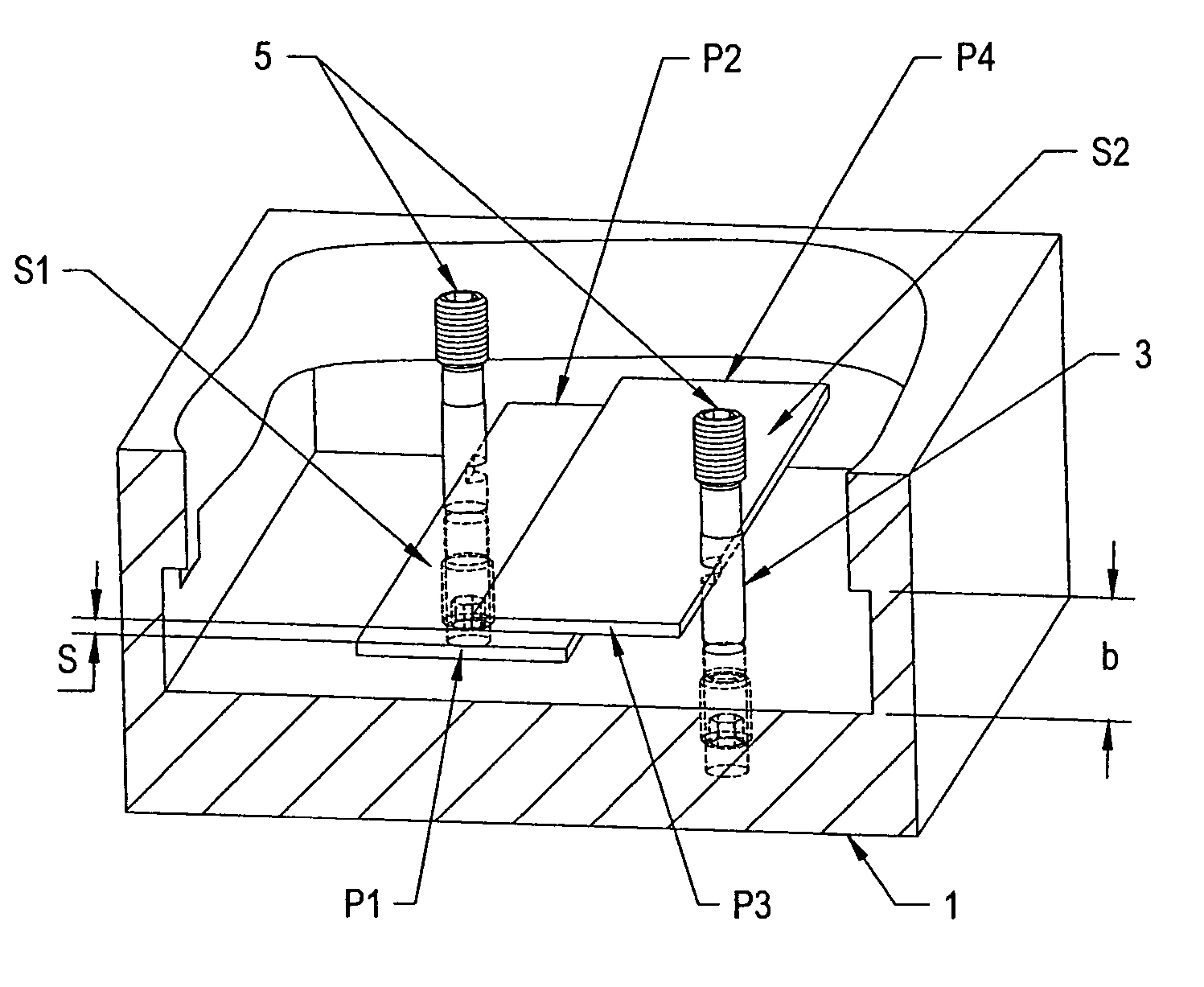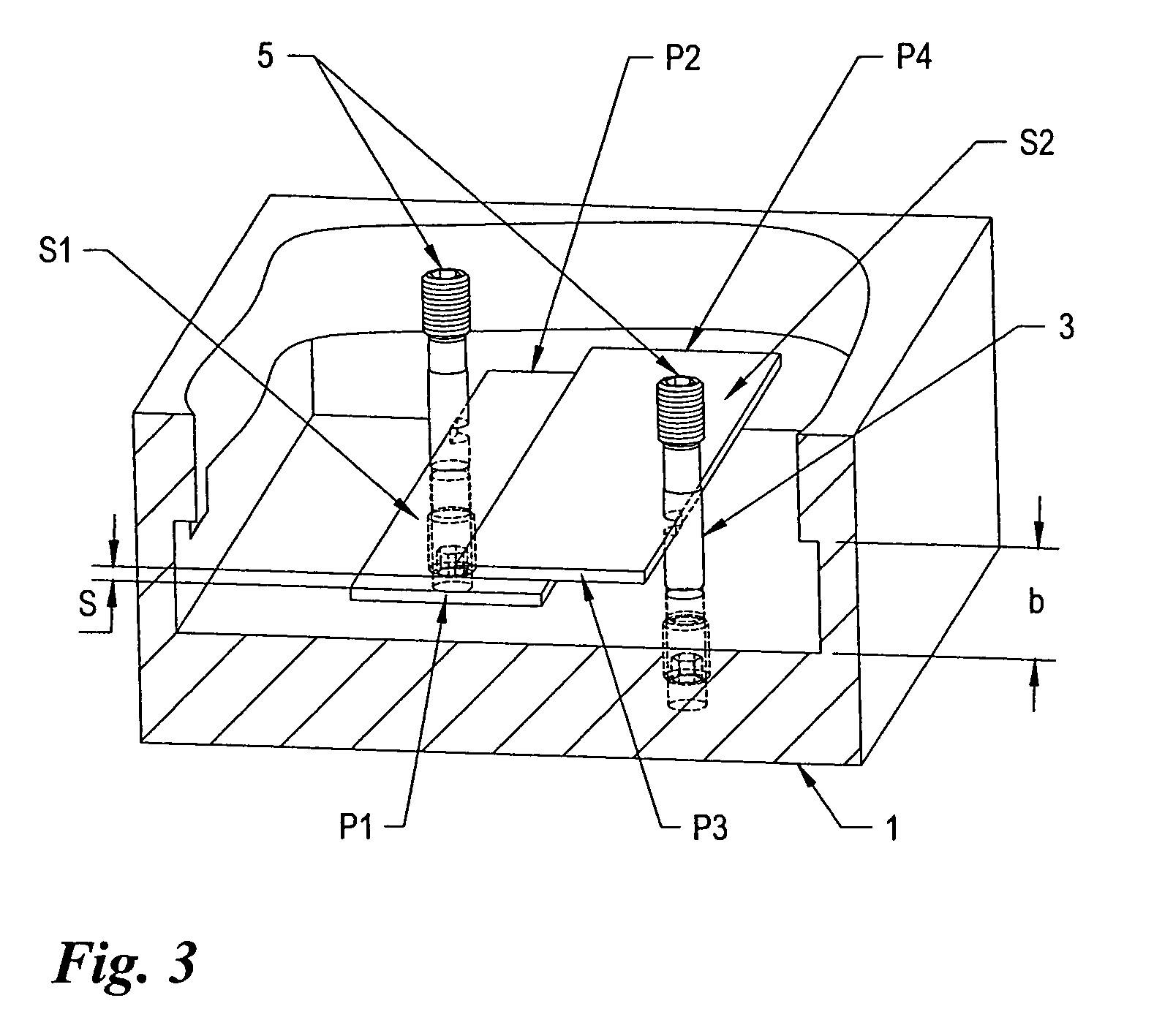Directional coupler
a technology of directional couplers and couplers, applied in the field of directional couplers, can solve problems such as performance degradation sources, and achieve the effect of tight manufacturing tolerances
- Summary
- Abstract
- Description
- Claims
- Application Information
AI Technical Summary
Benefits of technology
Problems solved by technology
Method used
Image
Examples
first embodiment
[0019]FIG. 2 shows a directional coupler according to the invention. It has first and second transmission lines S1, S2 arranged substantially parallel within a housing 1, 2 of the coupler. Each of the two transmission lines S1, S2 is fixedly attached to a corresponding non-metallic spacer 3, which is held in a corresponding hole in the housing. Set screws 5 allow to adjust the vertical position of each line within the housing and thereby adjust the gap s between the two lines. The spacers are attached through slots to the edges of the striplines. However other attachment means are likewise possible.
second embodiment
[0020]FIG. 3 shows in the invention inner details of a directional coupler with offset broadside-coupled striplines S1 and S2 arranged in a common housing 2. As in the embodiment before, each of the two transmission lines S1, S2 is fixedly attached to a corresponding non-metallic spacer 3, which is held in a corresponding hole in the housing 1. Set screws 5 allow to adjust the vertical position of each line within the housing 1 and thereby adjust the gap s between the two lines. Not shown in the figures are the port sections, where there is a departure from coupling to transmission, as these sections are not subject to the invention. The transmission sections may also provide further mechanical support for the striplines.
[0021] For ease of manufacture, parallelism is usually required and therefore, especially in broadband couplers with varying coupling along the line, the coupling is set by the amount of overlap between the lines (see FIG. 3) while the gap s between the lines is con...
PUM
 Login to View More
Login to View More Abstract
Description
Claims
Application Information
 Login to View More
Login to View More - R&D
- Intellectual Property
- Life Sciences
- Materials
- Tech Scout
- Unparalleled Data Quality
- Higher Quality Content
- 60% Fewer Hallucinations
Browse by: Latest US Patents, China's latest patents, Technical Efficacy Thesaurus, Application Domain, Technology Topic, Popular Technical Reports.
© 2025 PatSnap. All rights reserved.Legal|Privacy policy|Modern Slavery Act Transparency Statement|Sitemap|About US| Contact US: help@patsnap.com



